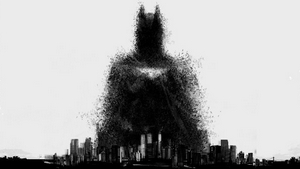
A third film seems to be the biggest pitfall in nearly every trilogy. Some see it as a challenge, and that’s likely what propelled director Christopher Nolan to return to the helm of the franchise he rebooted in 2005 with Batman Begins and hit out of the park in 2008 with The Dark Knight. Nolan has been trending steadily upward and seemed to be making strides to not only top his second Batman film, but also send him off with the knowledge that he created one of the greatest trilogies of the modern age and avoided the common trappings of the blockbuster films in the post-Avatar 3D era. Perhaps that was simply too much to accomplish, but The Dark Knight Rises stands as evidence that you can still stick the landing three films later.
Several years after the death of Harvey Dent (Aaron Eckhart), the wanted Batman is still a no-show in Gotham City. Crime has trended downwards since the “Dent Act” has thrown a 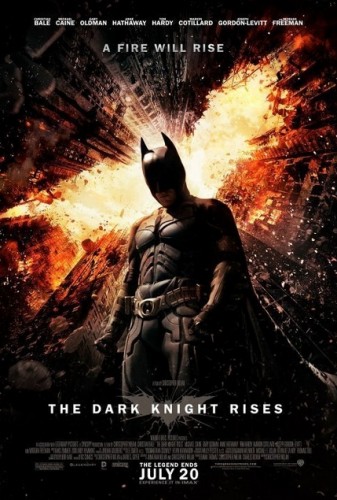 slew of criminals behind bars, but there is still hushed talk of whether the caped crusader will ever appear again. Despite putting away the cape and cowl, Bruce Wayne (Christian Bale) hasn’t appeared publicly and is holed up in his mansion, leading many to believe he has pulled a Howard Hughes. When a new evil springs up in the form of the monstrous and diabolical masked terrorist Bane (Tom Hardy), it sets up a challenge that will test Wayne in every way.
slew of criminals behind bars, but there is still hushed talk of whether the caped crusader will ever appear again. Despite putting away the cape and cowl, Bruce Wayne (Christian Bale) hasn’t appeared publicly and is holed up in his mansion, leading many to believe he has pulled a Howard Hughes. When a new evil springs up in the form of the monstrous and diabolical masked terrorist Bane (Tom Hardy), it sets up a challenge that will test Wayne in every way.
There is a dreariness that permeates this 165 minute feast for the eyes and mind, and the pacing is critically slow in the first hour. A blitzkrieg of new characters is followed up by new plotlines that are hard to connect and keep track of. A mysterious thief named Selina Kyle (Anne Hathaway) is the standout of all the newcomers, as she is never clearly black or white. This gives her the ability to be the much-needed wildcard in a film full of straight arrows. With all of the new faces it takes nearly an hour for Batman to show up. Yet he blows onto the screen in such a triumphant manner that you might only have qualms with this upon reflection, which is exactly why I’m harping on this point. The wait for Batman should open the floodgate for him, yet Nolan seems more interested in telling the story of the other players in the film. Even Bruce Wayne likely ends up with more screen time. How a film called The Dark Knight Rises can have so little of the Dark Knight is head scratching, but if you’ve been on this journey up to now, you might expect this. Nolan isn’t interested in giving you what you want. His story is more precious than selling a slew of brightly colored toys. This is a film that contains Catwoman (Selina Kyle) who is never called Catwoman, nor utilizes a whip or any discernible claws, though her goggles do flip up to resemble cat ears.
That’s all fine and good if the story takes the lack of Batman and gives us capable and compelling characters to follow in his stead. The issue isn’t that other newcomers John Blake (Joseph Gordon-Levitt) and wealthy philanthropist Miranda Tate (Marion Cotillard) aren’t interesting. Instead, they have to share too much of the screen. The one major failing here is that there are simply too many characters. This bloats the runtime and makes things hard to keep track of. As for Bane, he seems bent on destruction, but his flowery language (which is a wonderful juxtaposition to his appearance) and way his voice fills the room can make him hard to understand. Yet, every time he speaks you can feel yourself on edge, ears at full capability. The effect is deliriously disorientating the way his voice seems to come from every corner of the room. Additionally, Bane’s fighting capability is a new wrinkle for the villains in Nolan’s trilogy, as no one to this point has really been capable of testing Batman in one-on-one combat.
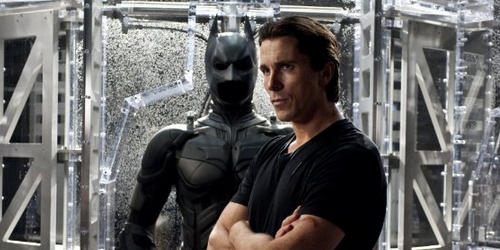
Fans of the character will know that Bane has long been hailed as Batman’s equal in fighting prowess, intellect, and superior in strength. As with all of his previous films in this trilogy, Nolan’s emphasis on using practical effects pays off in spades. Here, the payoff begins right from the opening sequence in which a plane is hijacked and then destroyed as it is suspended from another, larger plane above it. The sequence is thrilling but most notable is that it occurs in broad daylight. This marks a change in this film that sets it apart from the previous two. Instead of hiding in shadows and night, we finally see Batman in broad daylight fighting various foes. Another change is that an emotional all-out brawl with Bane occurs without quick cuts which are a welcome change from the first two films.
Nolan also builds on his previous ideals, especially whether Batman should even exist (Gotham did fine without him for quite some time) and what the suit means. No, it’s not just a single man in a cape. He is a symbol, and this symbol can last for years to come with or without Wayne at the helm. At least that’s the notion that is put forth here. However, an unending fund of money also helps Wayne make Batman a reality. The expensive toys aren’t just there to look good. In many ways, this can be seen as an odd moment where Nolan is stepping on his own toes. Nolan’s emphasis that everything be grounded in reality means that every piece of Batman’s suit and weapons serve a purpose; there is little room for extravagance. He has had years of training and the money to throw at issues. Batman’s response to a group of imitation caped crusaders asking why they should stay on the sidelines in The Dark Knight is “because I’m not wearing hockey pads.” That’s right. He’s wearing function Kevlar moldings that have been developed through years of R&D for the military.
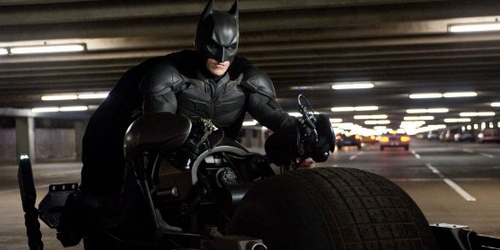
This isn’t just an issue for Nolan’s films, though. Truly, this has been an issue for all iterations of the Dark Knight since artist Bob Kane and writer Bill Finger created him in 1939. The idea that someone can take on the mantle of Batman without his funding, training, or intellect is absurd, but there’s also an interesting notion of the kind of person would don a mask to fight in the dark without any sense of reward or benefit. Nolan smartly builds off of the first two films, showing how much damage Wayne has taken both mentally and physically. He is still distraught over the loss of Rachel Dawes and the physical toll that he has taken shows up front and center in a clever sequence. Alfred (Michael Caine) is the emotional staple as he pleads with Bruce to move on with his life before he pays the ultimate price. However, Bruce can’t leave behind the city that haunts him in every way. The fact that it has taken so much from him and given so little in return is part of the reason why fighting for Gotham is almost a self-destructive cycle.
G-S-T RULING:
The Dark Knight is a near insurmountable film to follow. Everything about its presentation, emotion, and clear plot was enhanced by Heath Ledger’s wondrous portrayal of the anarchistic Joker. Bane is a capable foe, but the magic is just not there and the film lacks the levity that Ledger wickedly provided. Sure, Kyle provides some playful banter with the criminals and especially with Batman and Bruce, but it isn’t enough. Yet despite the slow start of The Dark Knight Rises, the emotional payoff is incredible. For every minute you felt the beginning was overlong you will hope for more minutes in the end. That says editing is an issue, but it becomes hard to fault a film that steadily builds towards this kind of landing. You might have issues with the sort of ending that is there, and I really won’t fault you for that. Yet I loved it as I watched it. Perhaps a second viewing will change that, but I live in this unfortunate world where my initial opinion is what I have to work with and I think Nolan gave a calculated and worthy conclusion to one of the best trilogies around.
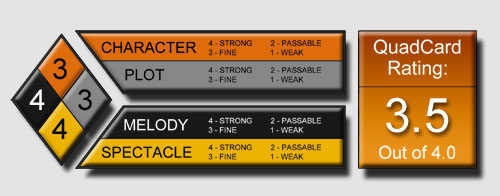
Side-note: One of the highlights of The Dark Knight was seeing it in IMAX, as Nolan was the first filmmaker to utilize the larger-format film to create a spectacle of enhanced clarity and scale. I welcomed this change in emphasis as it was stunning to witness on a full IMAX screen. Unfortunately two things have since occurred. IMAX has watered down their own brand by not strictly enforcing a screen size that is capable of utilizing the 70MM print (most are actually converted digital theaters), and 3D has instead taken over despite having little to no benefits for the spectator. In fact, because of unscrupulous theaters trying to maximize bulb life, 3D films often appear murkier and dull compared to their regular format presentations. Full IMAX screens remain a limited commodity because the cameras used to take advantage of the format are so difficult to manage, expensive to film on, and loud as hell. Thus, my own screening took place in a regular format theater, meaning I cannot comment on what it is like to view the hour-plus of footage in The Dark Knight Rises but I eagerly anticipate it in the coming days.
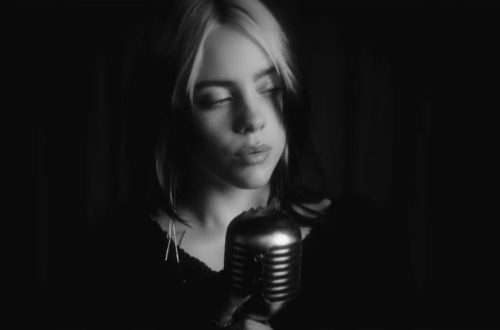
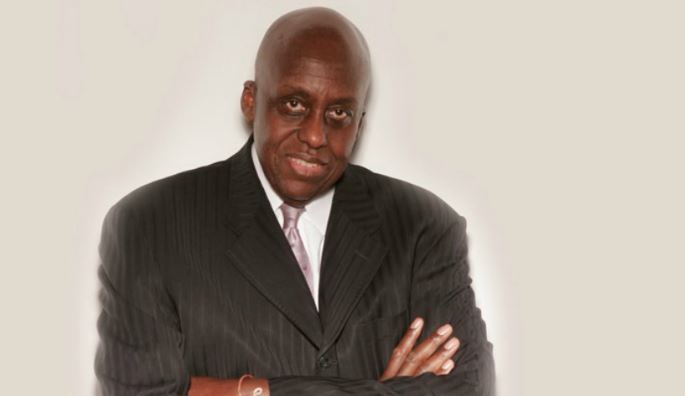
2 Comments
Fogs
I had a big issue with the “bloat” that you point out. I thought it was very difficult to get past… just kept me from getting into the movie. When you combine that with the fact that I wasn’t a big fan of Bane, you can see how I might get into trouble…
I do agree though that it was pretty sweet to see an enemy that was Batman’s equal in a fight. That was great.
RidgeRacer4
I agree with you Bill, some kind of magic was noticeably lacking and the film felt like it was having trouble juggling so many new characters. But for the roundabout path it took and the overlong moments, the film steadily built to one hell of an ending. And I mean one hell of an ending. I think it’s even better than the very end of Batman Begins. Quick but highly effective
and entirely satisfying.
Oh, and figuring out Bane speak is easy if you’re versed in Conneryese:P